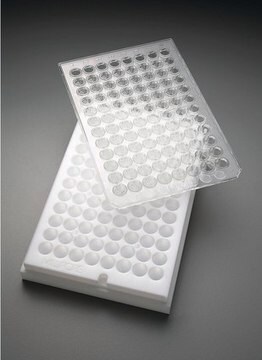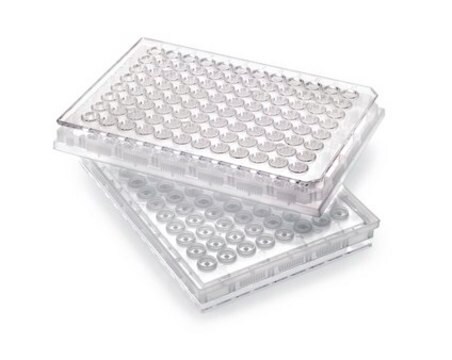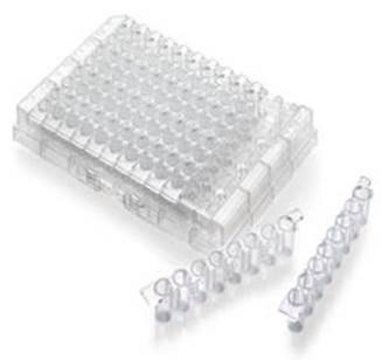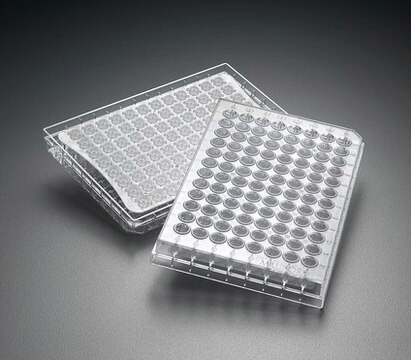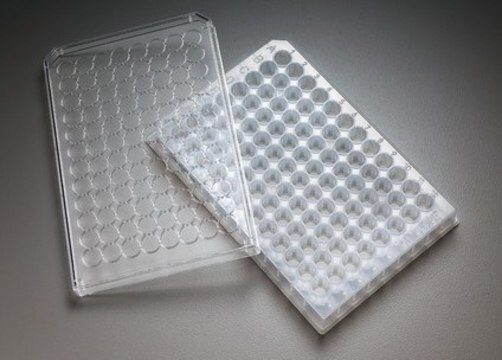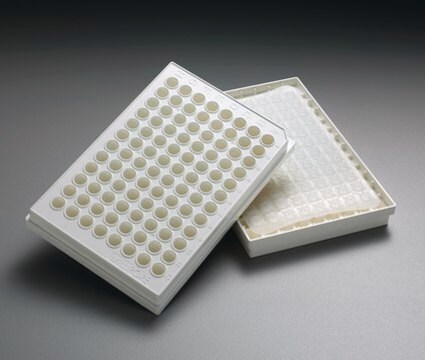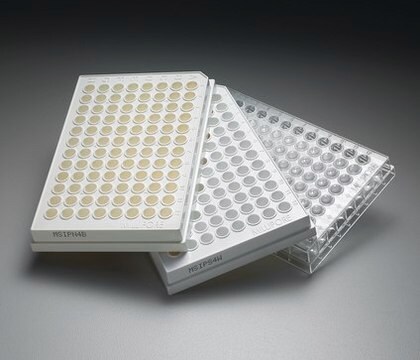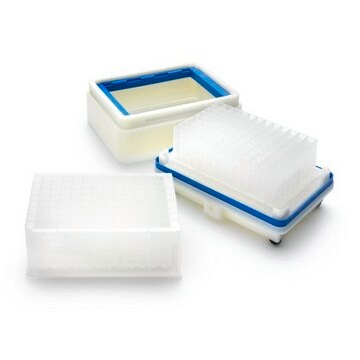MSIPN4B10
Multiscreen® 96 well Plate, hydrophobic PVDF membrane
pore size 0.45 μm, non-sterile
About This Item
Recommended Products
material
Barex®
PVDF membrane (hydrophobic)
flat bottom wells
titanium dioxide
Quality Level
description
Avidin biotin linkages, DNA-binding proteins, protein binding, PAMPA
sterility
non-sterile
product line
MultiScreen®
feature
hydrophobic
lid
manufacturer/tradename
MultiScreen®
parameter
50-250 μL sample volume (per well)
technique(s)
parallel artificial membrane permeation assay (PAMPA): suitable
H
14.4 mm
L
128 mm
W
85.5 mm
filtration area
0.28 cm2
plate size
96 wells
well maximum volume
300 μL
working volume
50-250 μL
matrix
Immobilon®-P
pore size
0.45 μm pore size
binding type
high binding surface
shipped in
ambient
Application
Legal Information
Not finding the right product?
Try our Product Selector Tool.
Certificates of Analysis (COA)
Search for Certificates of Analysis (COA) by entering the products Lot/Batch Number. Lot and Batch Numbers can be found on a product’s label following the words ‘Lot’ or ‘Batch’.
Already Own This Product?
Find documentation for the products that you have recently purchased in the Document Library.
Articles
This article details the benefits of combining solubility and a non-cell based permeability assay (Parallel Artificial Membrane Permeation Assay; PAMPA) into a single workflow in which a portion of the filtrate from the MultiScreen® Solubility filter plate is added to the donor compartment of the MultiScreen filter plate for the PAMPA analysis.
The enzyme-linked immunosorbent spot (ELISpot ) assay enables visualization of multiple secretory products from a single responding cell. The ELISpot provides both qualitative (type of immune protein) and quantitative (number of responding cells) information.
Protocols
Guidelines for various bioassays on the MultiScreen system, which makes it possible to carry out an assay from sample incubation to scintillation counting in a 96-well plate.
Our team of scientists has experience in all areas of research including Life Science, Material Science, Chemical Synthesis, Chromatography, Analytical and many others.
Contact Technical Service